
3 minute read
VII. World War II, Augusta Continues to Grow
World War II
Augusta Continues to Grow
Advertisement
In 1913, the new Maine Central Railroad Station opened and, the following year, a double-track railroad bridge was constructed across the Kennebec River.
In 1918, Kennebec Savings Bank moved to 292 Water Street (which later became 288 Water Street), the southwest corner of Market Square at Granite Block, and remained there until 1959. At that time there were just two employees. Bank assets were just under $2.5 million.
1920 marked the year the Blaine Mansion became the o cial residence of Maine’s governors.
In 1921, Guy P. Gannett, with the help of his father William H. Gannett, restored Fort Western and presented it to the city as a memorial to his mother, Sadie Hill Gannett.
Other historic events over the next 30 years included the revival of shipbuilding in Maine, brought on by the start of World War II, and the construction of a new 10,000-gallon reservoir in 1930.
e City voted to spend $50,000 to complete Cony High School, and it was dedicated in November 1930. Motorbuses replaced electric streetcars in 1932 and, in 1934, construction began on the Augusta Airport. Also in 1934, a typhoid fever epidemic threatened the city.
In 1937, the Augusta Players were organized. e Players were very much a social club, with meetings that involved productions of one-act plays and lively discussion of theater in general. e Augusta Players produced shows during World War II, and often had to reschedule shows to accommodate it. A week before one show, the male lead enlisted in the Navy and was called up. A female took over the role.
By 1940, Augusta’s population had grown to more than 19,000 people. Because of the war, the town also experienced a shipbuilding boom from 1942 to 1945.
In 1945, the City of Augusta joined the world in celebrating the end of World War II.
Opposite: 1940’s location of Kennebec Savings Bank, next to Capitol Theater, Water Street, Augusta. The Edward’s Manufacturing Company acquired the Augusta Sprague Mill in 1882. When this photograph was taken, Edward’s had added three buildings and 95,000 spindles, and had recruited workers from Quebec, thus founding Augusta’s modern Franco-American community.
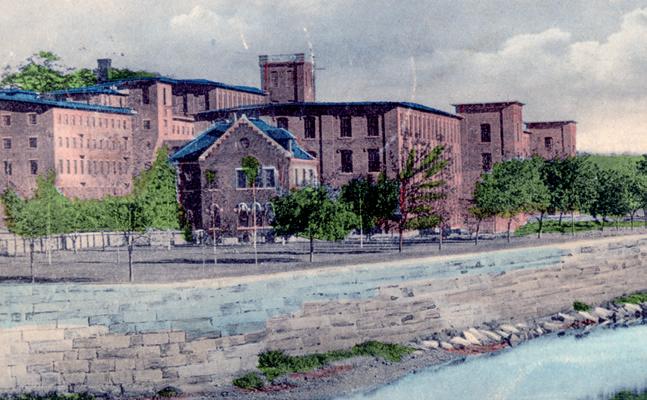

LOOKING BACK TO ADS FROM ANOTHER TIME
Kennebec Savings Bank placed advertisements on a very regular basis in local newspapers, which was one of the very few ways to promote products and services during this era. The Bank’s ads promoted everything from convenient hours to the drive-up window to celebrating important milestones.


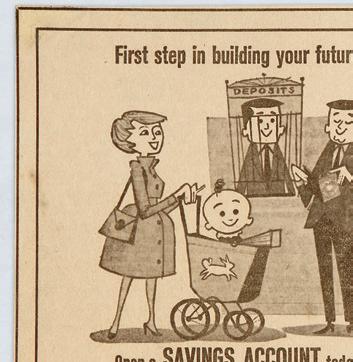
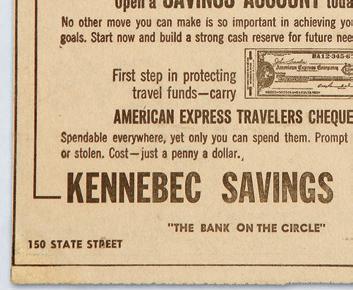


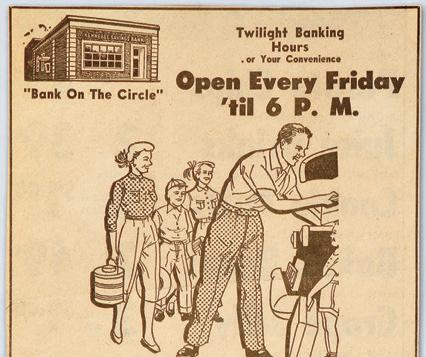
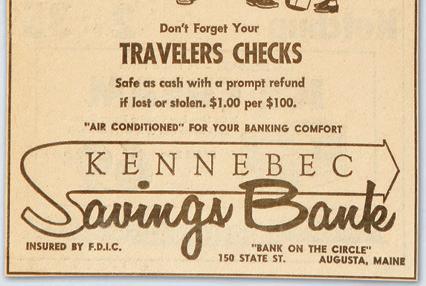





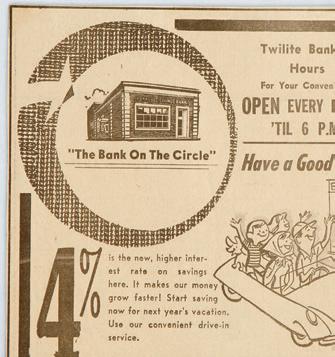





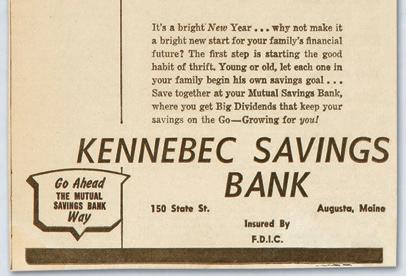


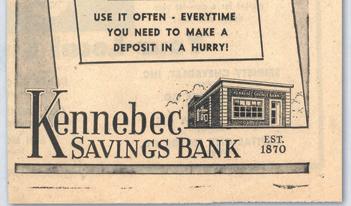

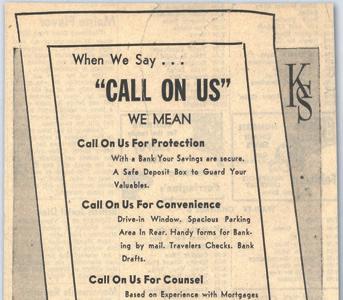
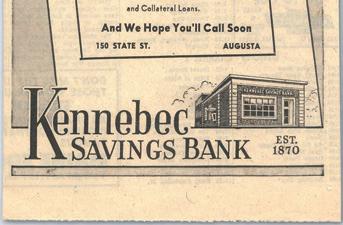
CELEBRATING HISTORY

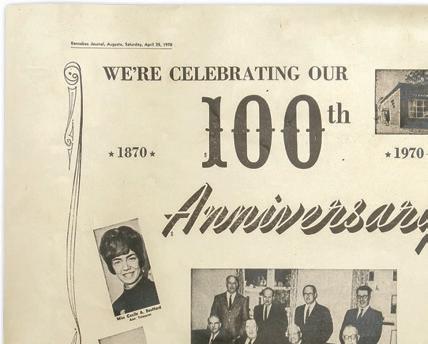
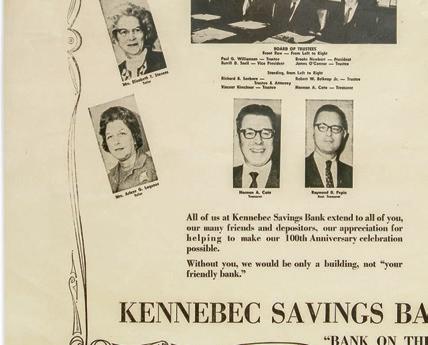

The Bank celebrated its 50th, 100th and 125th anniversary by placing full-page advertisements in the Kennebec Journal.










